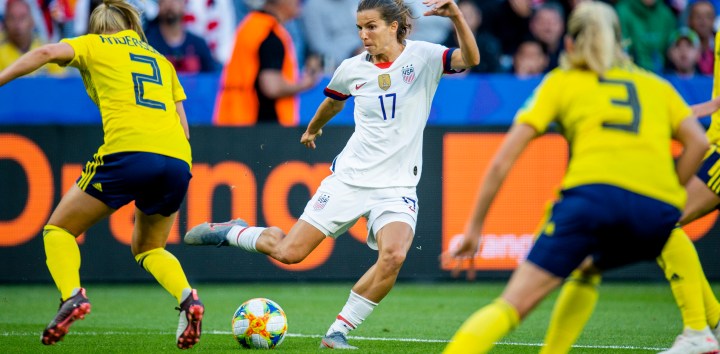Sport
Soccer World Cup: The (in)equality problem

Equal pay for equal work is a nice theory. But when it comes to professional sport, and more specifically soccer, it’s not even a theory.
Before the 2019 Soccer World Cup kicked off in France, the United States women’s soccer team filed a lawsuit. In an unprecedented suit, all 28 members were named as plaintiffs. The case is simple: they want to be paid the same as their male counterparts. They filed their case under the simple “equal pay for equal work” premise.
Several members of the men’s team backed their move. But the US governing body for the sport said it was surprised. Since then, a number of sponsors have stepped up to narrow the gap.
But just how big is that gap?
The lawsuit filed by the women stated that if each team played and won 20 exhibition games in a year, “female WNT players would earn a maximum of $99,000, or $4,950 per game, while similarly situated male MNT players would earn an average of $263,320, or $13,166 per game.”
Did you get that?
Women earn just 38% of what the men do.
While some athletes can earn more through sponsorship, it’s the differences in base salaries that are astounding. And it’s not just with the US team where this discrepancy is present.
South Africa’s women earn a fraction of what the men do – reportedly R5,000 per game for women compared to R50,000 for men.
Even the world’s governing body, the one organising the tournament, pays women less. Perhaps not all that surprising from an organisation which once had a president that said if women played in outfits that were a bit sexier they’d get more people watching.
FIFA’s prize money pay gap by the numbers
FIFA, and critics of equal pay for equal work, say that the gap is a reflection of the difference in revenues generated by the men and women’s tournaments. But FIFA doesn’t have full transparency when it comes to publishing its financial books. It publishes some nuggets of data, but it’s way off what would be needed to form a holistic picture.
And, as pointed out by Australia’s Professional Footballers union, the figures are out of whack.
“The sum of $700-million allocated to the men’s world cup is not anchored to any economic analysis. It’s either couched in diplomacy or politicisation … or just looking at their balance sheet, it’s totally arbitrary, it’s got no reference to any economic KPIs,” chief John Didulica said in April 2019.
The battle for accurate pay-equality data
To this day, the most comprehensive survey of pay equality in professional sport relies on data captured in 2017.
Sporting Intelligence surveyed over 460 teams across 16 countries in nine different sports. Almost 10,000 men and nearly 2,500 women responded. The results were alarming.
Professional women vs professional men
The nugget that stood out from the salary report was this: Neymar earns more for his club than the top seven women’s soccer leagues combined.
For some, this piece of information might say more about the ridiculous state of how much money soccer players earn than the wage gap, but no matter how you spin it, it is reprehensible.
Using the data from that survey, the numbers are even more staggering when put into comparison between the top three most lucrative leagues for men and women.
Unequal access to opportunities
To fully understand just how unequal the playing field is, you have to understand the opportunity inequality. For years, and across all fields, women have either been excluded outright or not given their due credit.
Nowhere is this exclusion still so starkly evident as in professional football. The sheer gulf in number of professional men compared to professional women’s footballers tells a story.
At the time of the survey, there were just over 137,000 professional male soccer players globally compared to 1,287 women. Or, to put it in context, just 0.93 percent of the professional footballers in the world are women.
Representation is a serious problem.
The living wage gap
But even these numbers don’t paint the full picture. Because what counts as “professional” for women is actually semi-professional for men. Professional means earning a living wage doing nothing but playing soccer. No commitments to coach clinics, no needing to get a second gig. Just soccer. While some women do earn more than some professional men, the overarching inequality curve is much bigger in professional soccer than it is in our society as a whole.
Soccer’s inequality in context of society
Consider this for a second. At the time when the study was done, 44% of Sweden’s members of parliament were women. In fact, most parliaments in the world have a better female representation than professional women’s soccer players.
This isn’t just true in politics. Even in areas where women are grossly under-represented such as academia, religion, medicine, CEO positions and directorships, the percentage of female representation is far greater than that of professional female soccer players.
The final frontier
The survey summed it up succinctly. Space is no longer the final frontier: parity for female athletes is. And in case you’re wondering, of the people who have gone to space, more than 11% are women. DM

















 Become an Insider
Become an Insider